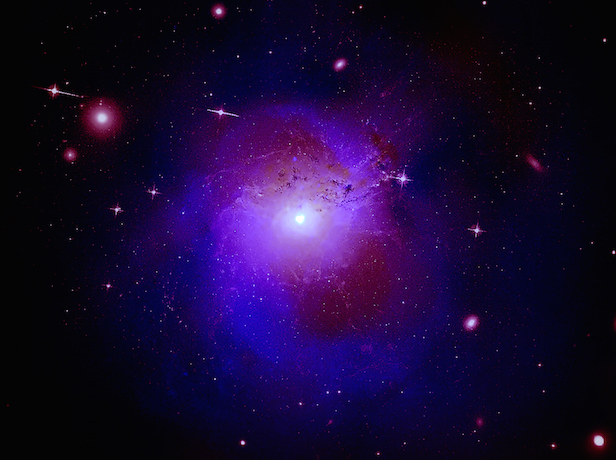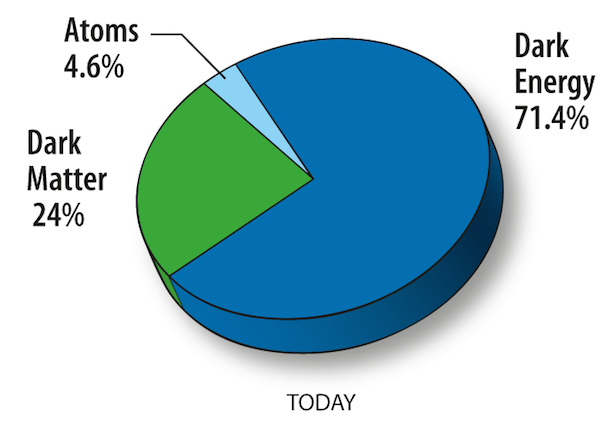New substance could reveal dark matter particles
The material, known as a scintillator, could reveal the presence of light dark matter particles

Although we cannot directly see dark matter, astronomers can infer its existence from their observations of several galaxies within the universe. Image credit: NASA/CXO/Fabian et al./Gendron-Marsolais et al./NRAO/AUI/NSF/NASA/SDSS
Dark matter continues to evade and confuse astronomers no matter how hard they search for it. For a substance that makes up about 25 per cent of the universe, astronomers have not yet been able to directly observe dark matter. In a recent report researchers announce the discovery of a new material that may be able to directly detect dark matter. This material, known as a scintillator, should be sensitive to dark matter that is lighter than a proton, and allows astronomers to search for dark matter in a previously unexplored mass range.
In the past astronomers have watched galaxies rotate, discovering that the speed at which galaxies rotate should cause them to be torn apart. The only way to explain this was with the presence of a hidden matter, referred to as dark matter, keeping the galaxy together. Yet ever since, astronomers have failed in their attempts to directly observe dark matters existence. The matter we can observe in the universe only makes up about 5 per cent of our cosmos, and the roughly remaining 70 per cent is an even more elusive substance called ‘dark energy’, fuelling the expansion of the universe.
Dark matter particles that are heavier than protons are known as weakly interacting massive particles, also known as WIMPs. There have been several attempts in uncovering WIMPs, some of which include underground laboratories that are shielded away from outside interference. However, all of these attempts have failed so far, and astronomers are still clueless as to the mass of dark matter. If dark matter were to be discovered, it would completely change our understanding of the entire universe.

Dark energy and dark matter make up roughly 95 per cent of the entire universe, yet astronomers have yet to directly observe either of these substances. Image credit: NASA
The new scintillator material reportedly operates near to absolute zero, which equates to almost minus 460 Fahrenheit. It works by detecting electrons recoiling from collisions with dark matter particles. The target in this case will be gallium arsenide, or GaAs, which is tampered with traces of other elements. The target will emit a photon, which is a particle of light, after an electron in the target is excited by a collision with a dark matter particle.
This discovery marks the first time an n-type GaAs has been used as a cryogenic scintillation detector. GaAs, which was chosen because of its low-band-gap energy, can be combined with a cryogenic photodetector, detecting light at very low temperatures. The future results were described by Stephen Derenzo of the Lawrence Berkeley National Laboratory, California, United States, as “a workhorse useful in the search for dark matter in a largely unexplored mass range.”
When the masterpiece is assembled and ready to go it will be carried underground in order to conduct these experiments. As mentioned earlier, underground laboratories can shield the equipment from harmful cosmic rays or other false signals. There is a serious limitation to most scintillators, however, and that is its afterglow, also known as phosphorescence. This afterglow could mimic dark matter detection and prove to be a false result. In more positive news, the recent report also claims there is no afterglow effect with the new scintillator material, making the likelihood of detecting dark matter more of an exciting possibility.
Keep up to date with the latest reviews in All About Space – available every month for just £4.99. Alternatively you can subscribe here for a fraction of the price!




